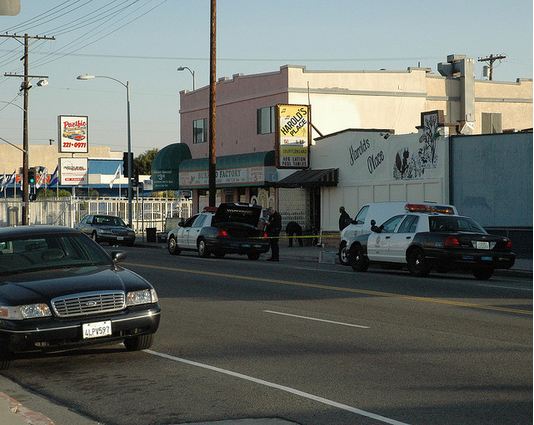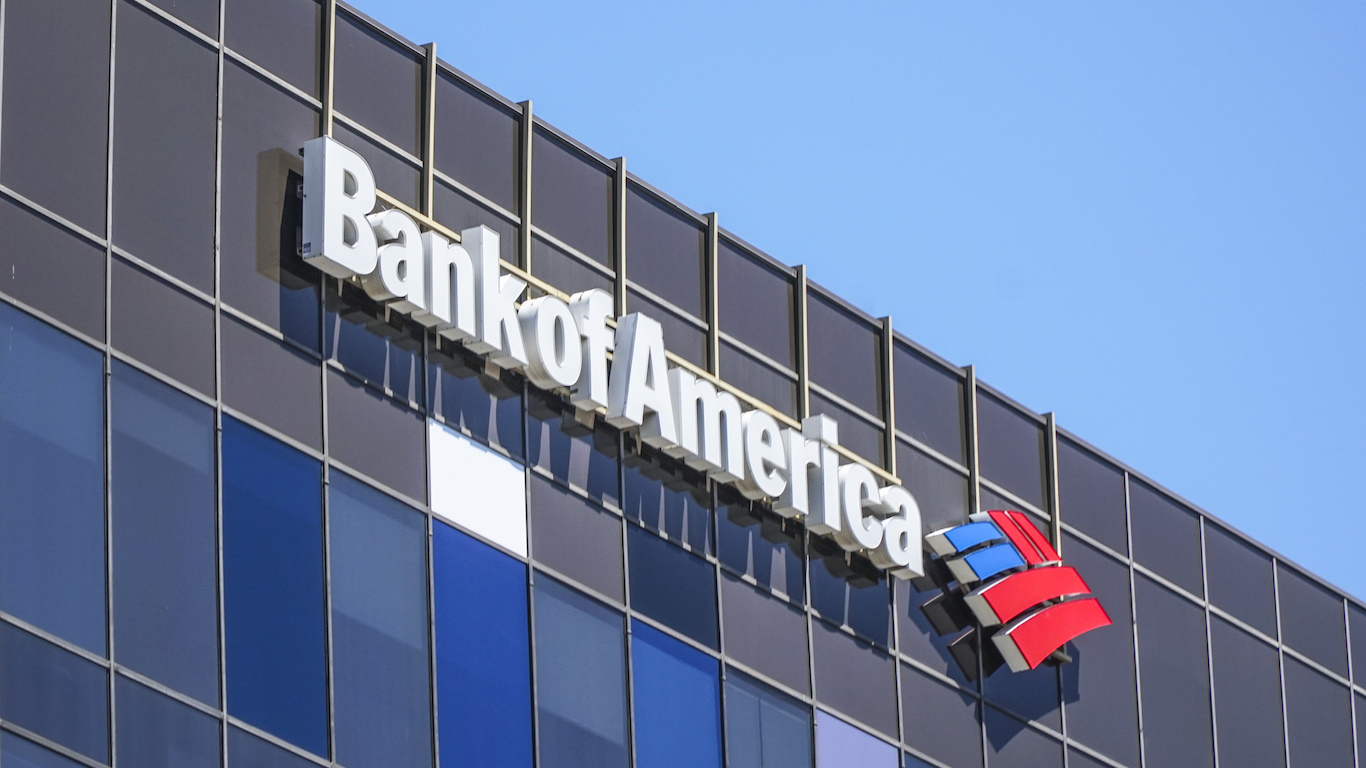 For years, experts have maintained that crime rates increase with rising unemployment and poverty rates. Yet data released earlier this year from the FBI show a marked decrease in the national violent crime rate between 2005 and 2010 even as unemployment and poverty have continued to skyrocket. Experts are stumped. Using the FBI’s Uniform Crime Reports database, 24/7 Wall St. has identified the 10 metropolitan areas where violent crime rates decreased the most.
For years, experts have maintained that crime rates increase with rising unemployment and poverty rates. Yet data released earlier this year from the FBI show a marked decrease in the national violent crime rate between 2005 and 2010 even as unemployment and poverty have continued to skyrocket. Experts are stumped. Using the FBI’s Uniform Crime Reports database, 24/7 Wall St. has identified the 10 metropolitan areas where violent crime rates decreased the most.
Read: Cities Where Violent Crime is Soaring
Read: Cities Where Violent Crime is Plummeting
Nationwide, the crime rate has declined 13.9% from 469 incidents per 100,000 individuals in 2005 to 403.6 in 2010. In fact, 2010 was the fourth year in a row crime has declined in the U.S. Looking at the 328 metropolitan statistical ares (MSAs), it’s clear that in some cities crime rates have dropped even more than the national average. In the ten regions 24/7 Wall St. has identified, the rate has dropped by 25%-50%.
The ten cities, however, do not share any clear trends or characteristics to explain the cause behind their decreased crime rates. Some of them have high poverty rates, low median incomes and high unemployment rates. Others are quite wealthy, with high median incomes and low poverty rates that are about half the national average. In many of them, however, crime still remains a severe problem, despite the decline.
If poverty and unemployment cannot explain the dramatic drops in crime rates, what can? 24/7 found that what accounted for those declining incidences of assault, murder and robbery were local projects, improvements in law enforcement, and urban development — usually, a combination of these. While many of these cities still have a long way to go, they have had success at fighting crime on a local level.
These are the cities where violent crime is plummeting.
10. Salisbury, MD
> 5-year decrease in violent crime rate: -237
> Violent crime per 100,000 (2005): 906.4
> Violent crime per 100,000 (2010): 669.7
> Murders per 100,000: 9
In 2005, the Salisbury, Maryland area had the 12th highest violent crime rate in the country. At a rate of 906.4 for every 100,000 residents it was nearly double the national rate of 469.3. By 2010, however, the region’s rate had dropped 38% to 669 violent crimes per 100,00 people. This was still much higher than the national average, and the murder rate actually went up over that time, but a substantial decline in the number of robberies and assaults represented a positive sign for the crime-ridden region. According to the Baltimore Sun, state Governor Martin O’Malley announced that year a $156,000 grant to Salisbury to start the second Safe Streets program in the state. The program had shown apparent benefits in Annapolis.
9. Savannah, GA
> 5-year decrease in violent crime rate: -240.4
> Violent crime per 100,000 (2005): 582.9
> Violent crime per 100,000 (2010): 342.5
> Murders per 100,000: 6.5
The metro region of Savannah, Georgia had a violent crime rate of 582.9 per 100,000 residents in 2005, which was well above the national rate, and the second-highest rate in the state. In 2010, that number had dropped 41% to 342.5, putting it below the national average of 403.6. In that time, the rate of robberies dropped 37%, and the rate of aggravated assault dropped 42%. In a 2009 speech elaborating on his stimulus package, president Obama named Savannah as a target area for Justice Assistance Grant, or “JAG” funds. The president said: “Savannah, Georgia Police Department would use the Byrne JAG funds for crime and intelligence analysts. The stimulus funding would also be targeted for juvenile prevention and intervention efforts in Savannah. The department intends to bridge the school resource and community gaps by adding police officers specifically to work with the schools and communities.”
8. Gainesville, FL
> 5-year decrease in violent crime rate: -244
> Violent crime per 100,000 (2005): 867.4
> Violent crime per 100,000 (2010): 623.4
> Murders per 100,000: 5.9
In 2005, the Gainesville, Florida metro region’s violent crime rate of 867.4 incidents for every 100,000 residents was the 15th highest in the country. In 2007, after the city reported another disappointing increase in violent crime, a task force was started to deal specifically with that problem, according to the Gainesville Sun. It appears to have helped. By 2010, the violent crime rate had dropped 28% to 623.4, although it is still well above the U.S. average rate. In the city of Gainesville, things did not actually improve much and there were actually 31 more robberies in 2010 than in 2005. However, outside the city limits robberies declined and there were 372 fewer cases of aggravated assault.
7. Tampa-St. Petersburg-Clearwater, FL
> 5-year decrease in violent crime rate: -249.7
> Violent crime per 100,000 (2005): 749.7
> Violent crime per 100,000 (2010): 500
> Murders per 100,000: 4.3
Between 2005 and 2010, much of the state of Florida had a massive increase in unemployment. The Tampa Bay-St. Petersburg-Clearwater metro area was no exception, with the unemployment rate in the area rising from 3.9% to 12.1%. This substantial increase in joblessness appeared to have little impact on violent crime, which declined 33% from 749.7 crimes per 100,000 people to 500 — above but relatively close to the national average. The metro area went from having the 19th highest violent crime rate in the country to 75th highest. According to the St. Petersburg Times, in Ybor city, a historic Tampa neighborhood with a high number of bars and clubs, the rate has dropped 84% since 2001.
6. Jackson, TN
> 5-year decrease in violent crime rate: -333.6
> Violent crime per 100,000 (2005): 989
> Violent crime per 100,000 (2010): 655.4
> Murders per 100,000: 4.4
In 2005, the Jackson, Tennessee metro region, which includes Chester and Madison counties, had the seventh-highest violent crime rate in the country. By 2010, that rate had declined 33.7%, from 989 to 655.4 per 100,000 residents. In that same period, the rate of robberies declined more than 20% and the aggravated assault rate dropped 36%. While we did not consider non-violent crime for our discussion, it is worth noting that the rate of property crime, which includes burglary, larceny, and motor vehicle theft, dropped 16% in the same six-year interval.
5. Alexandria, LA
> 5-year decrease in violent crime rate: -345
> Violent crime per 100,000 (2005): 983
> Violent crime per 100,000 (2010): 638
> Murders per 100,000: 7.5
The Alexandria metro region, located in the center of the state of Louisiana, had the 8th highest rate of violent crime in the country in 2005 at 983 incidents per 100,000 residents. By 2010, that number had declined by 345, or 35%, to 638. This is still well above the national average, but it drops the region from the 8th-highest violent crime rate to the 29th highest. While the rate of robberies actually increased over that time, the assault rate dropped by nearly 50%.
4. Santa Fe, NM
> 5-year decrease in violent crime rate: -349.6
> Violent crime per 100,000 (2005): 706.6
> Violent crime per 100,000 (2010): 357
> Murders per 100,000: 6.6
In 2005, the Santa Fe, New Mexico region had a violent crime rate of 706.6 per 100,000, which was the 35th highest in the country and substantially higher than the national average. By 2010, the rate had dropped by nearly 50% to 357. Santa Fe now ranks a respectable 177th highest, and has a crime rate below the national level. While robbery actually increased over this period, there were 448 fewer cases of aggravated assault in 2010 than 2005. In 2006 Santa Fe was still struggling with growing violent and gang-related crimes in the city. according to the Sante Fe Reporter. That’s when Mayor David Coss proposed a youth summit to address crime in the city, as well as use in school tactics to identify children susceptible to crime and take appropriate steps to intervene.
3. Vineland-Milville-Bridgeton, NJ
> 5-year decrease in violent crime rate: -405
> Violent crime per 100,000 (2005): 899.6
> Violent crime per 100,000 (2010): 494.6
> Murders per 100,000: 6.3
The Vineland-Milville-Bridgeton metro area in southern New Jersey had a violent crime rate of 899.6 incidents for every 100,000 residents in 2005. This was the 14th-highest rate in the country that year. In 2010, that rate had dropped 45%, or 405 incidents per person. Robberies dropped 35%, and the rate of assaults fell even more. In the city of Vineland, NJ, there were 506 cases of aggravated assault in 2005, compared to just 131 in 2010. According to NBC40, with rising crime becoming an issue in 2007, the state initiated a large-scale plan, which specifically targeted gang-related violence and worked on preventing children from joining gangs.
2. Shreveport-Bossier City, LA
> 5-year decrease in violent crime rate: -451.2
> Violent crime per 100,000 (2005): 1078.5
> Violent crime per 100,000 (2010): 627.3
> Murders per 100,000: 8.4
In 2010, the Shreveport-Bossier City metro area in Louisiana had the fourth-highest crime rate in the country at 1078.5 incidents per 100,000 residents. In other words, this is more than one incident of violent crime for every 100 people. But murder, robbery, and aggravated assault rates all fell during the six-year period. In the City of Shreveport, the number of robberies fell 43%. A report on crime in Louisiana by Louisiana Public Broadcasting’s Louisiana Public Square discussed Shreveport’s success, “In Shreveport, a focus on the environment that breeds crime is having significant success according to Police Chief Henry Whitehorn. ‘The concept is that if you allow a small nuisance crime to manifest in certain neighborhoods, then the citizens allow other things to happen,’” he said. If you start with stopping the small crimes, the theory goes, you automatically prevent the bigger ones. Apparently, it’s working in Shreveport.
1. Florence, SC
> 5-year decrease in violent crime rate: -596.9
> Violent crime per 100,000 (2005): 1286.4
> Violent crime per 100,000 (2010): 689.5
> Murders per 100,000: 10.4
In 2005, Florence, South Carolina had a staggering violent crime rate of 1,286 per 100,000 persons, the highest rate in the country. Combined with property theft in that year, the crime rate was 5,972 per person, the equivalent of one crime for every 16.7 people in a given year. By 2010, violent crime had dropped by 596.9, or 44%, to 689 per 100,000 people. The Florence area is currently undergoing a large-scale redevelopment project, which will turn 150,000 square feet of “underused space” into stores and restaurants. According to the Florence Downtown Development Team, more than $1 million will be devoted to beautification projects. Besides attracting tourists, city planners use this kind of gentrification projects to cut down on crime rates.
-Michael B. Sauter
Are You Ahead, or Behind on Retirement? (sponsor)
If you’re one of the over 4 Million Americans set to retire this year, you may want to pay attention.
Finding a financial advisor who puts your interest first can be the difference between a rich retirement and barely getting by, and today it’s easier than ever. SmartAsset’s free tool matches you with up to three fiduciary financial advisors that serve your area in minutes. Each advisor has been carefully vetted, and must act in your best interests. Start your search now.
Don’t waste another minute; get started right here and help your retirement dreams become a retirement reality.
Thank you for reading! Have some feedback for us?
Contact the 24/7 Wall St. editorial team.





